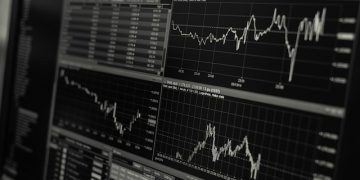NEW YORK (Reuters) – Wall Street joined a global march propelling stock indexes to record highs on Tuesday, with investors selling government bonds in a bet that COVID-19 vaccinations and U.S. stimulus will deliver a durable economic recovery after a year of lockdowns.
Bitcoin added to the bullish mood, briefly climbing above $50,000 for the first time, while prospects of “reflation” – a boost in inflation from extraordinary fiscal stimulus – pushed U.S. Treasury yields higher.
U.S. President Joe Biden will travel to Wisconsin on Tuesday to press his case for a $1.9 trillion pandemic relief bill in the political battleground state that helped secure his victory in last year’s presidential election.
The MSCI’s global stock index was about flat at 685.05 after hitting a record high of 687.26 earlier in the session. A positive close would mark the 12th consecutive day of gains for the first time since January 2004.
On Wall Street, the Dow hit an all-time high on Tuesday, while the S&P 500 and the Nasdaq retreated slightly from record levels, as investors bet on more fiscal aid to lift the world’s biggest economy from a coronavirus-driven slump.
“The reflation trade continues to push equity markets across all industries and multi-caps … and this rally could continue in the near-term,” said Tony Bedikian, head of global markets at Citizens Bank in Boston.
The Dow Jones Industrial Average rose 74.87 points, or 0.24%, to 31,533.27, the S&P 500 gained 0.63 points, or 0.02%, to 3,935.46 and the Nasdaq Composite dropped 40.75 points, or 0.29%, to 14,054.73.
European shares ended about flat around a one-year peak on Tuesday as a boost from major mining and bank stocks was tempered by losses in most other sectors, with investors remaining uncertain over a euro zone economic recovery.
The pan-European STOXX 600 index finished down 0.06%.
The 10-year U.S. Treasury yield neared 1.3% on Tuesday and the yield curve steepened as expectations of extended fiscal and monetary stimulus alongside hopes of an economic upswing boosted the reflation trade.
“The market has fully embraced the prospects of Biden’s $1.9 trillion stimulus, and the accelerated vaccine rollout is support of further bearish price action as well,” Westpac strategists told clients.
Bond yield curves – considered a reliable barometer of growth expectations – have also steepened, with the gap between two-year and 10-year U.S. notes now around 117 bps, the widest since March 2017..
The U.S. dollar bounced off three-week lows as bullish comments from a U.S. Federal Reserve official and upbeat manufacturing data helped arouse investor risk appetite.
Against a basket of its rivals, the greenback gained 0.213% to 90.526, after earlier falling to 90.117, its lowest level since Jan. 26.
Bitcoin briefly soared above $50,000 to an all-time high, adding steam to a rally fueled by signs that the world’s biggest cryptocurrency is gaining acceptance among mainstream investors and companies. The cryptocurrency was last up 1.5% at $48,673.09.
Graphic: Bitcoin crosses $50K –
Oil prices hovered near 13-month highs on Tuesday, supported by a deep freeze in the U.S. South that shut wells and oil refineries in Texas.
Brent crude futures settled at $63.35 a barrel, up 5 cents or 0.08%, while U.S. crude oil futures settled at $60.05 a barrel, up 58 CENTS or 0.98%.
Spot gold XAU= was down 1.34% at $1,794.21 an ounce.
Reporting by Saqib Iqbal Ahmed; Editing by Dan Grebler and Jonathan Oatis




